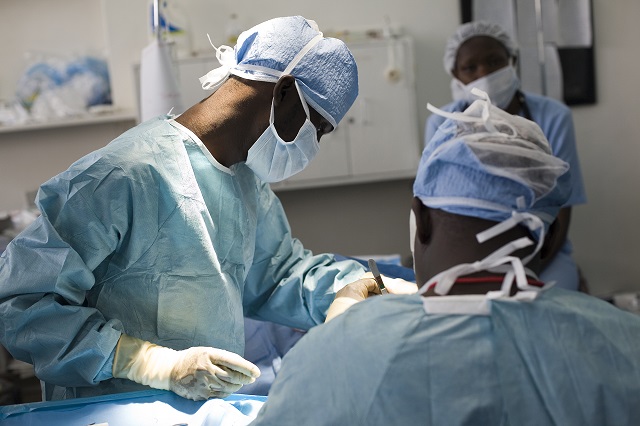
Kampala, Uganda | THE INDEPENDENT | More than half of the mothers who deliver their children in some private hospitals do so by undergoing a cesarean section, according to Annual Health Sector Performance Review released by the health ministry today.
According to the report, 51 percent of all expectant mothers at St Francis Hospital Nsambya deliver by C-section, while last year at Nakaseero Hospital, a dizzying 72% delivered by C-section.
Figures released by the health ministry today during the Health Sector Joint Review show that Mengo Hospital and Lubaga hospital also recorded high C-section rates at 47 and 41 percent respectively.
Dr Henry Mwebesa, the director general of health services at the ministry of health says that C-sections are very common in private hospitals.
“We see that the highest C-section rate is in private for-profit and private not-for-profit hospitals in the country,” he says. “In government-funded hospitals, the rate has reduced from 35 percent in the last financial year to 34 percent this year. It is going down.”
A national decrease of 7 percent was recorded in the number of C-sections that were carried out in the country from 49,369 in the year 2018/2019 to 45,806. However other hospitals like Mubende hospital, Hoima hospital, Fort Portal hospital and the Mulago Specialized Women’s and Neonatal Hospital all recorded at least a two percent increase in the number of C-sections carried out.
Gulu hospital recorded the lowest C-section rate at 12 percent. The hospital recorded a 2 percent decrease from 14 percent in the 2018/2019 financial year.
Dr Joyce Kaducu, the minister of primary health care says the high rate of C-sections being carried out in private hospitals needs to be investigated.
“The percentage of C-sections is quite high and we need to find out why,” she said. “It might not be the intention of private hospitals, there’s a possibility that many health center IVs and general hospitals are sending these patients to them. We need to find out where these referrals are coming from and what might be leading to these figures.”
Dennis Bwanika, the public relations officer at Mengo hospital says that they do not have a comment on the ranking as of yet.
“We shall have to look at maternal audits, but for now we do not have any comment,” he said.
According to the World Health Organisation, the ideal cesarean rate at any hospital should be between 10-15 percent.
The UN health agency recommends that C-sections be performed when natural delivery poses a threat to the mother or baby. For instance in situations of prolonged labour where both mother and baby become tired, and the fetus is in distress or when the baby is in an abnormal position.
C-sections have become a popular elective for expectant mothers in the country with some women carrying out as many as two procedures. Doctors warn they pose a danger to the health of a mother or child as they can lead to death since they require surgery.
They can also lead to a fever and increased vaginal bleeding for the new mother after birth. Mothers can also lose control of their bladder as a result. They can also lead to heart attacks or preterm birth in the next pregnancy.
*****
URN
 The Independent Uganda: You get the Truth we Pay the Price
The Independent Uganda: You get the Truth we Pay the Price


